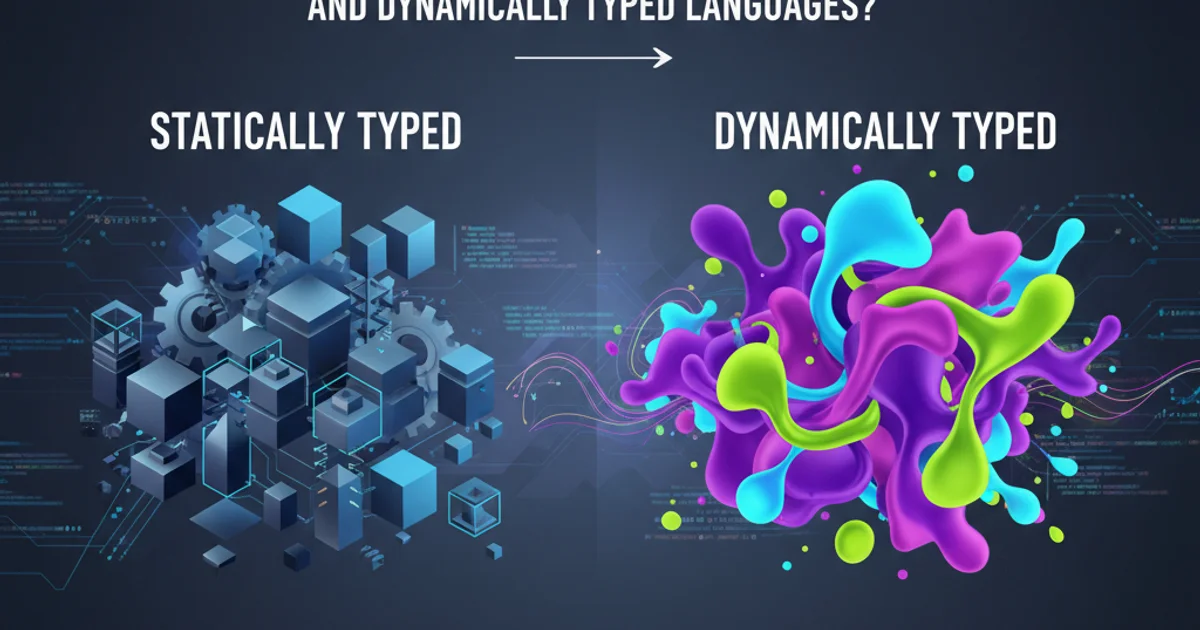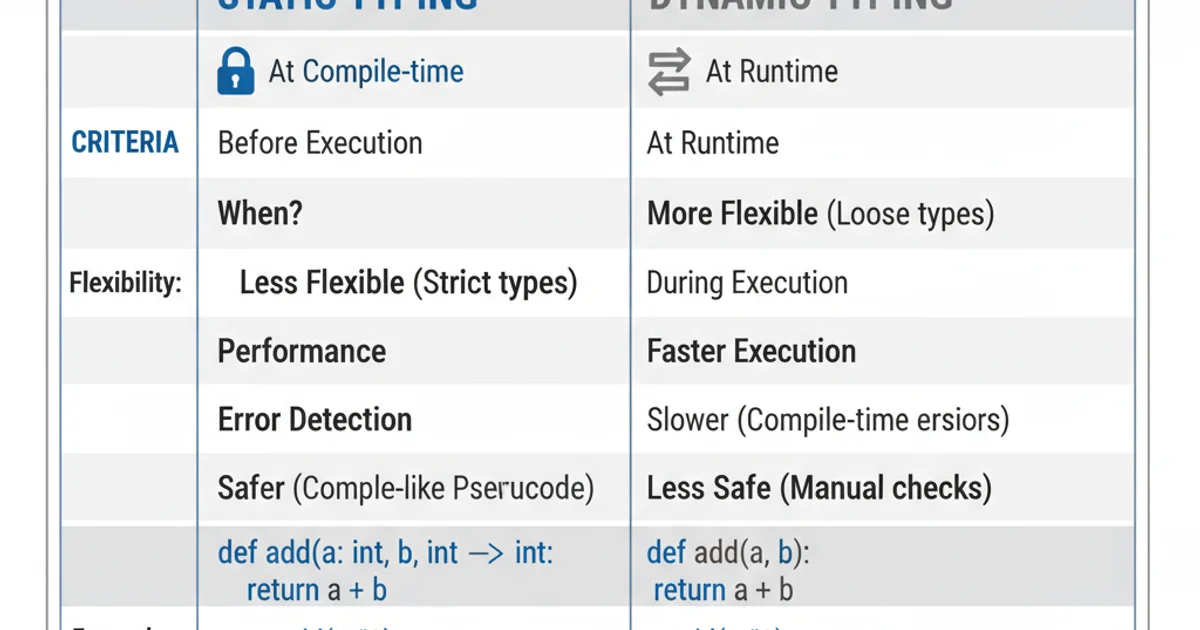What is the difference between statically typed and dynamically typed languages?
Categories:
Statically Typed vs. Dynamically Typed Languages: A Comprehensive Guide

Explore the fundamental differences between statically and dynamically typed programming languages, understanding their impact on development, performance, and error detection.
In the world of programming, one of the core distinctions between languages lies in how they handle data types: statically or dynamically. This choice profoundly influences a language's syntax, error detection mechanisms, runtime behavior, and even the development workflow. Understanding these differences is crucial for choosing the right tool for a project and for writing robust, maintainable code. This article will delve into the characteristics, advantages, and disadvantages of both paradigms, providing clear examples and insights.
What is Type Checking?
Before diving into static and dynamic typing, it's essential to understand type checking. Type checking is the process of verifying and enforcing the constraints of types – ensuring that operations are performed on compatible data types. For example, you wouldn't want to try to divide a string by an integer without explicit conversion. Type checking helps prevent such logical errors and ensures the integrity of data within a program.
flowchart TD
A[Code Written] --> B{Type Checker}
B -->|Types Match| C[Compilation/Execution]
B -->|Type Mismatch| D[Error Reported]
C --> E[Program Output]Basic Type Checking Process
Statically Typed Languages
In statically typed languages, type checking occurs at compile-time, before the program is executed. This means that every variable, function parameter, and return value must have its type explicitly declared or inferred by the compiler. If there's a type mismatch or an attempt to use a variable in a way inconsistent with its declared type, the compiler will report an error, preventing the program from running until the issue is resolved.
Characteristics of Statically Typed Languages
Statically typed languages offer several distinct characteristics:
- Early Error Detection: Most type-related errors are caught during compilation, reducing the likelihood of runtime bugs.
- Performance: Knowing the exact type of data at compile-time allows compilers to generate highly optimized machine code, leading to faster execution.
- Code Clarity and Maintainability: Explicit type declarations serve as documentation, making code easier to read, understand, and refactor, especially in large codebases with multiple developers.
- IDE Support: Integrated Development Environments (IDEs) can provide more robust auto-completion, refactoring tools, and real-time error checking due to the available type information.
public class StaticExample {
public static void main(String[] args) {
int age = 30; // Type 'int' declared
String name = "Alice"; // Type 'String' declared
// This would cause a compile-time error:
// age = "thirty";
System.out.println("Name: " + name + ", Age: " + age);
}
}
Java example demonstrating explicit type declaration and compile-time error prevention.
Dynamically Typed Languages
In contrast, dynamically typed languages perform type checking at runtime, during program execution. Variables in these languages do not have a fixed type associated with them; instead, their type is determined by the value they currently hold. This offers greater flexibility but shifts the responsibility of type correctness from the compiler to the developer and the runtime environment.
Characteristics of Dynamically Typed Languages
Dynamically typed languages come with their own set of characteristics:
- Flexibility and Rapid Development: Developers can write code more quickly without the overhead of explicit type declarations. Variables can hold different types of data throughout their lifecycle.
- Runtime Errors: Type-related errors are only discovered when the specific line of code is executed, potentially leading to runtime crashes if not thoroughly tested.
- Less Boilerplate: The absence of explicit type declarations can result in more concise code.
- Metaprogramming: Dynamic typing often facilitates powerful metaprogramming capabilities, allowing programs to modify their own structure or behavior at runtime.
def dynamic_example():
age = 30 # 'age' is an integer
name = "Bob" # 'name' is a string
print(f"Name: {name}, Age: {age}")
age = "thirty" # 'age' can now be a string
print(f"New age: {age}")
# This would cause a runtime error if executed:
# result = age / 2
dynamic_example()
Python example showing a variable changing its type at runtime.
Choosing Between Static and Dynamic Typing
The choice between static and dynamic typing is not about one being inherently superior to the other; rather, it depends on the project's requirements, team preferences, and the specific problem being solved. Each paradigm has its strengths and weaknesses.

Key Differences: Static vs. Dynamic Typing